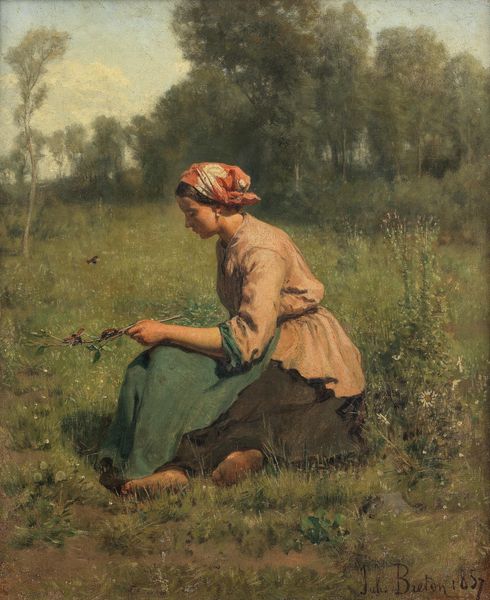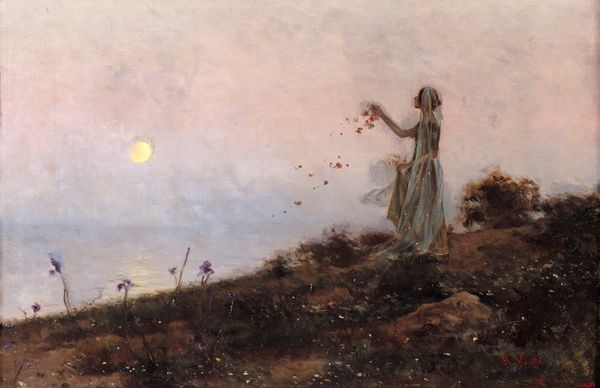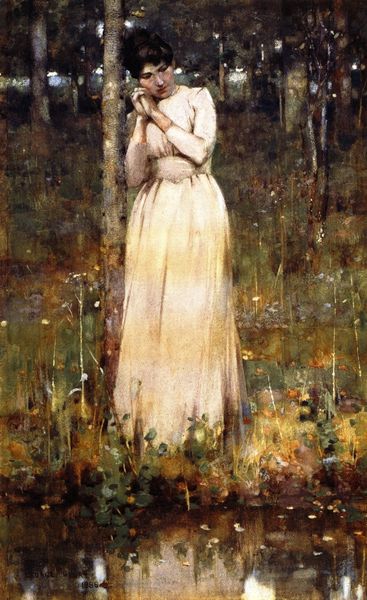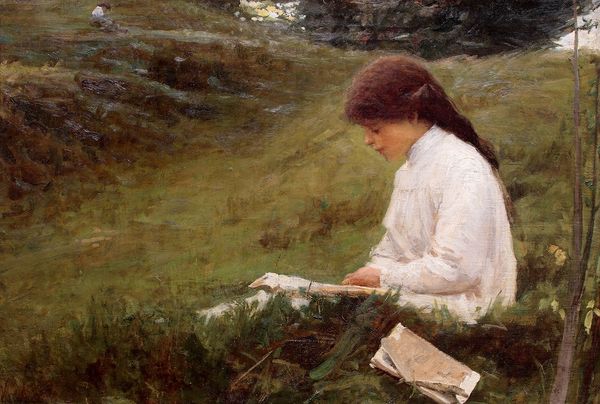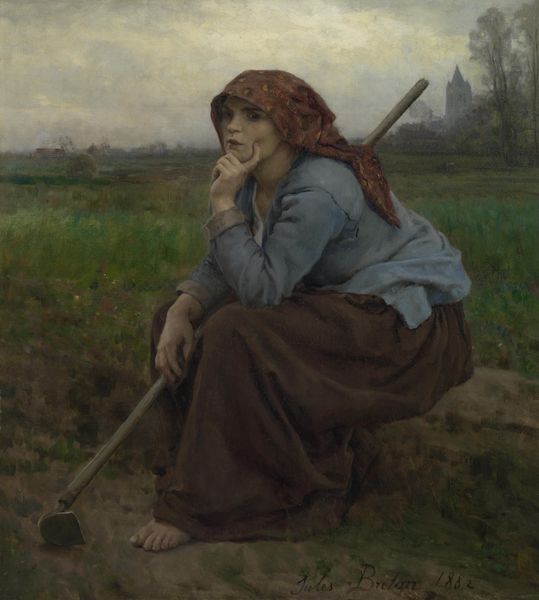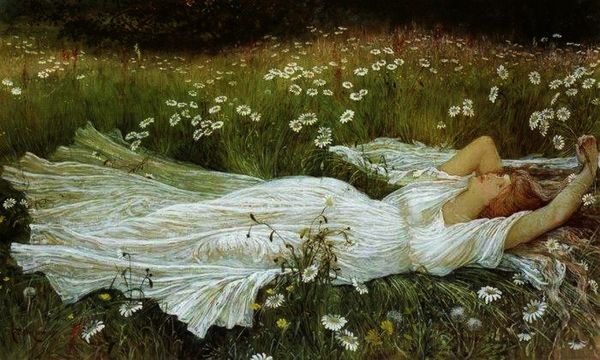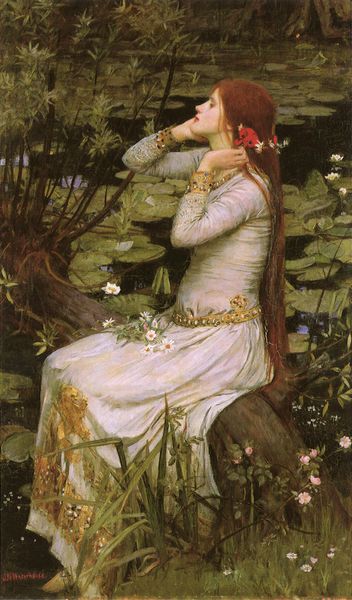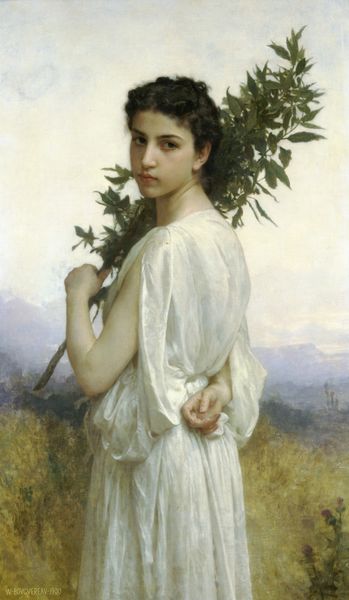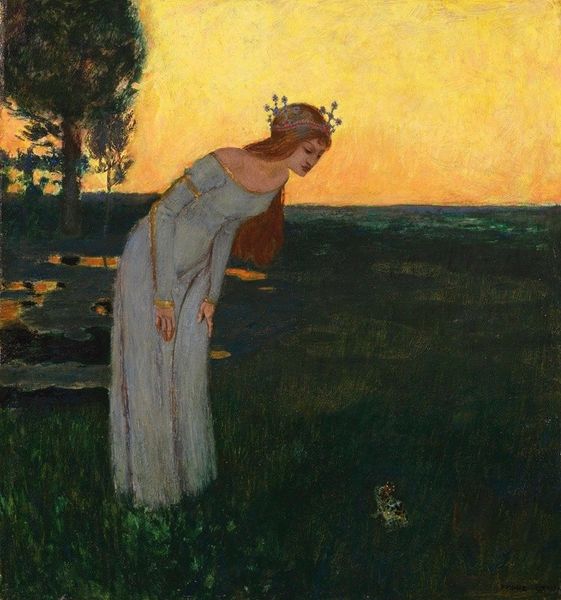
Copyright: Public domain
Curator: Noè Bordignon, the Venetian painter, crafted this evocative oil painting, "Spring," around 1890. What's your initial impression? Editor: There’s a pre-Raphaelite languor about it. The delicate palette and ethereal light lend a dreamlike quality. It evokes the kind of fragile beauty that’s so often assigned to women—and seasons! I wonder if this is meant to critique those very allegories… Curator: That reading certainly resonates. The painting's power, for me, lies in its simplicity of visual motifs: A solitary maiden amidst an awakening landscape. The subtle gestures are key—the slight dip of her head, the delicate touch of her fingers on the flower. These become symbols, ripe with cultural connotations, echoing a longer lineage of associating female figures with spring's regenerative power. Editor: Right, spring is always coded with rebirth, new beginnings… but for whom? The woman's subdued pose complicates that "fresh start" narrative. Her hand resting on her chest, that downward gaze – they almost seem to convey a weight, perhaps of societal expectation. Is she the spring, or *subject* to it? Curator: Indeed. Is it about freedom or constraint? She appears at one with nature, but her gaze stays fixed on the flowers at her feet, which arguably echoes how limited are woman’s spatial spheres within patriarchal paradigms. Perhaps Bordignon intended this ambiguity to evoke deeper considerations about women’s complex social realities at the turn of the century. Editor: The context of its creation is vital, right? Late 19th century—suffrage movements are gaining momentum, challenging established gender roles. An artwork like this would implicitly enter that discourse, even if subtly. Its message wouldn't simply be about pretty things, but perhaps hint at social tensions too. Curator: The Romantic movement prized individuality and personal emotion as much as the realists engaged with more immediate realities. When looking at the canvas’ symbolism as a conduit, Bordignon’s ability to capture these opposing aspects becomes obvious: spring flowers that suggest not just beauty but potential too. Editor: It certainly urges a dual interpretation of rebirth versus a passive role of an earthbound nature goddess! Curator: And by examining Bordignon's painting within its artistic context, and with sensitivity to its representation, it provides much fodder for insightful thought. Editor: Absolutely. An initially passive depiction of spring transforms into active social commentary upon closer inspection!
Comments
No comments
Be the first to comment and join the conversation on the ultimate creative platform.
